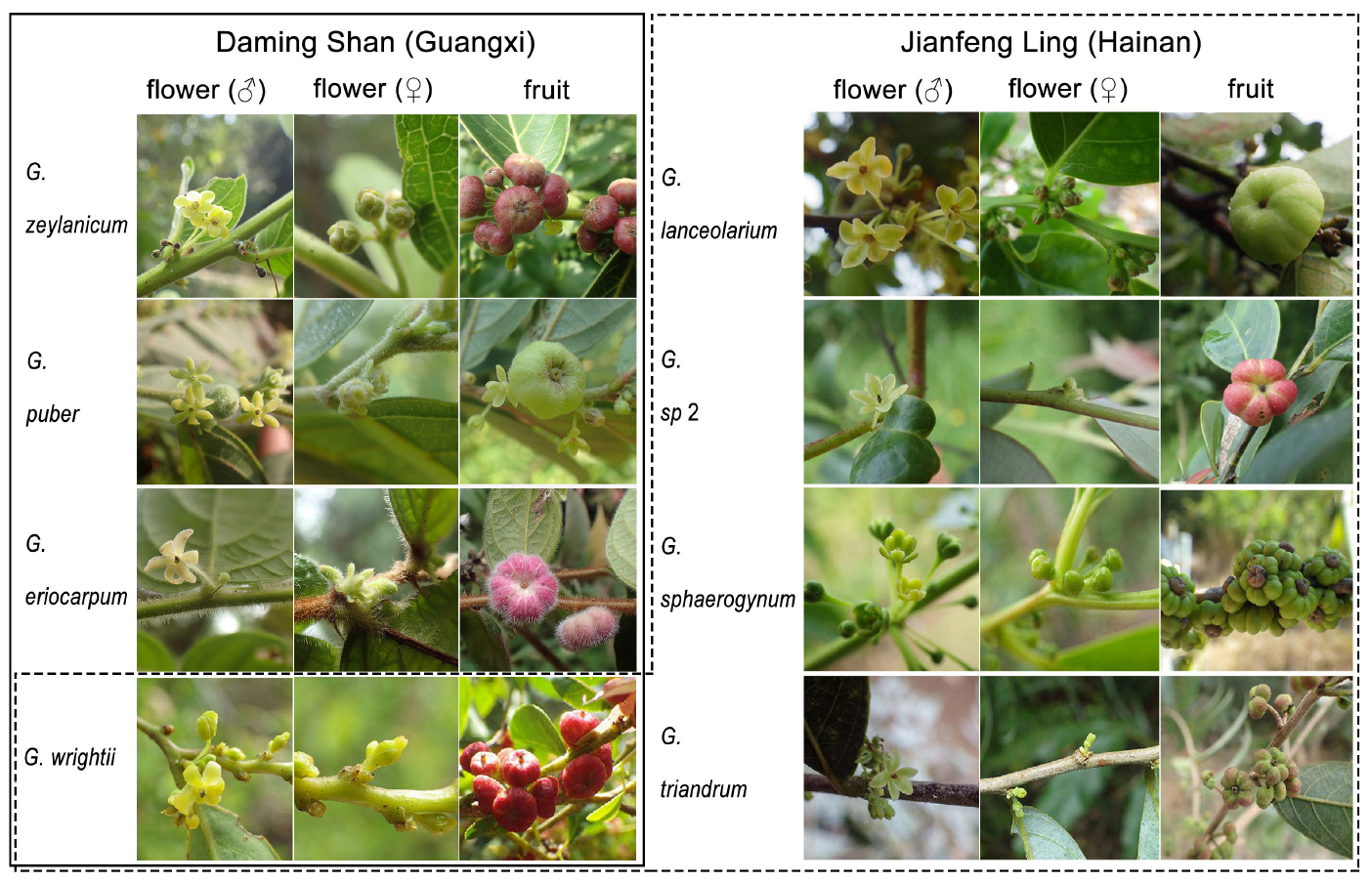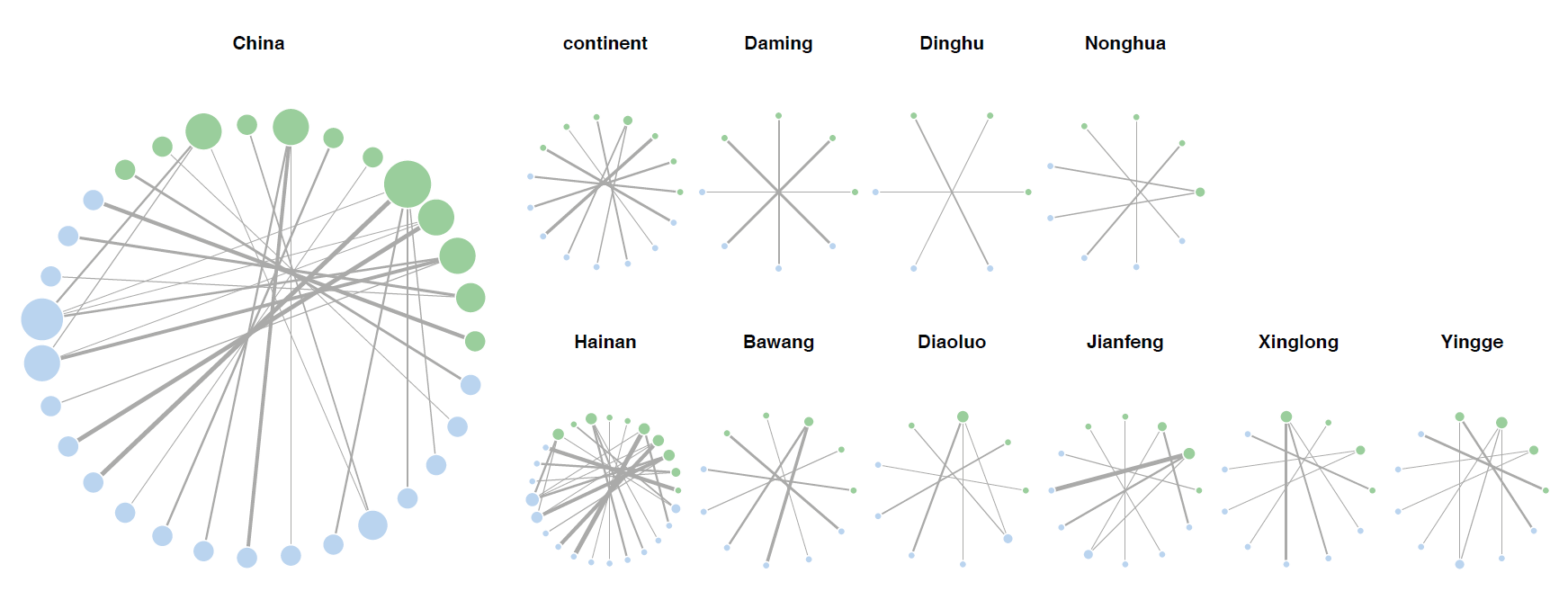The mechanism for macroevolutionary persistence of obligate mutualism
Highly intimate (symbiotic) mutualisms, such as brood pollination mutualisms, are characterized by reciprocally specialized and modular network architecture and constitute evolutionary paradoxes. This type of mutualism is particularly vulnerable to extinction, since reciprocally specialized and modular networks are usually locally species-poor and each species has only a few partners. However, this still know little about the mechanisms for macroevolutionary persistence of such specialized mutualisms.
To address this question, Researcher Luo Shixiao from the South China Botanical Garden of the Chinese Academy of Sciences conducted comparative studies of the interaction between obligate leafflowers and leafflower moth systems across three continental communities and five island communities at different scales. The main findings include: (1)Significant reciprocal specialization is conserved across local and regional scales in these networks, but this also find local-regional discrepancies in whether networks are significantly modular, resulting in adjacent local networks that differ in architecture. (2) Interaction turnover is almost entirely due to species turnover rather than interaction rewiring among widely distributed species. (3) This find that two regional networks are significantly nested, while none of the local networks are. The finding that some regional networks are nested in this system suggests a possible explanation for the macroevolutionary persistence of such specialized mutualisms. The resulting paper, titled “Network structure variation across scales offers clues to the macroevolutionary persistence of specialized mutualisms” was published online in Proceedings of the Royal Society B: Biological Sciences (DOI: 10.1098/rspb.2025.0926) on November 11, 2025.
ZHANG LianJie, a graduated master student from South China Botanical Garden of the Chinese Academy of Sciences, serves as the first author of this paper. Researcher LUO Shi-Xiao is the corresponding author. Dr. David H. Hembry from James Madison Universityholds positions as both first co-author and co-corresponding author. This work was supported by grants from the National Natural Science Foundation. Article Link: https://royalsocietypublishing.org/doi/10.1098/rspb.2025.0926

Figure 1. Map of southern China indicating the eight sites where this study was conducted. (Image by HAO et al.)

Figure 2. Diversity of Glochidion species found at two of the eight sites: Daming Shan (Guangxi) and Jianfengling (Hainan). One species, G. wrightii, is shared between the two sites. (Image by HAO et al.)

Figur 3. Local, subregional and regional networks recovered in this study. Green nodes indicate plant taxa (Glochidion) and blue nodes indicate moth taxa (Epicephala). Line thicknesses are proportional to the number of interaction events observed. (Image by HAO et al.)
File Download: